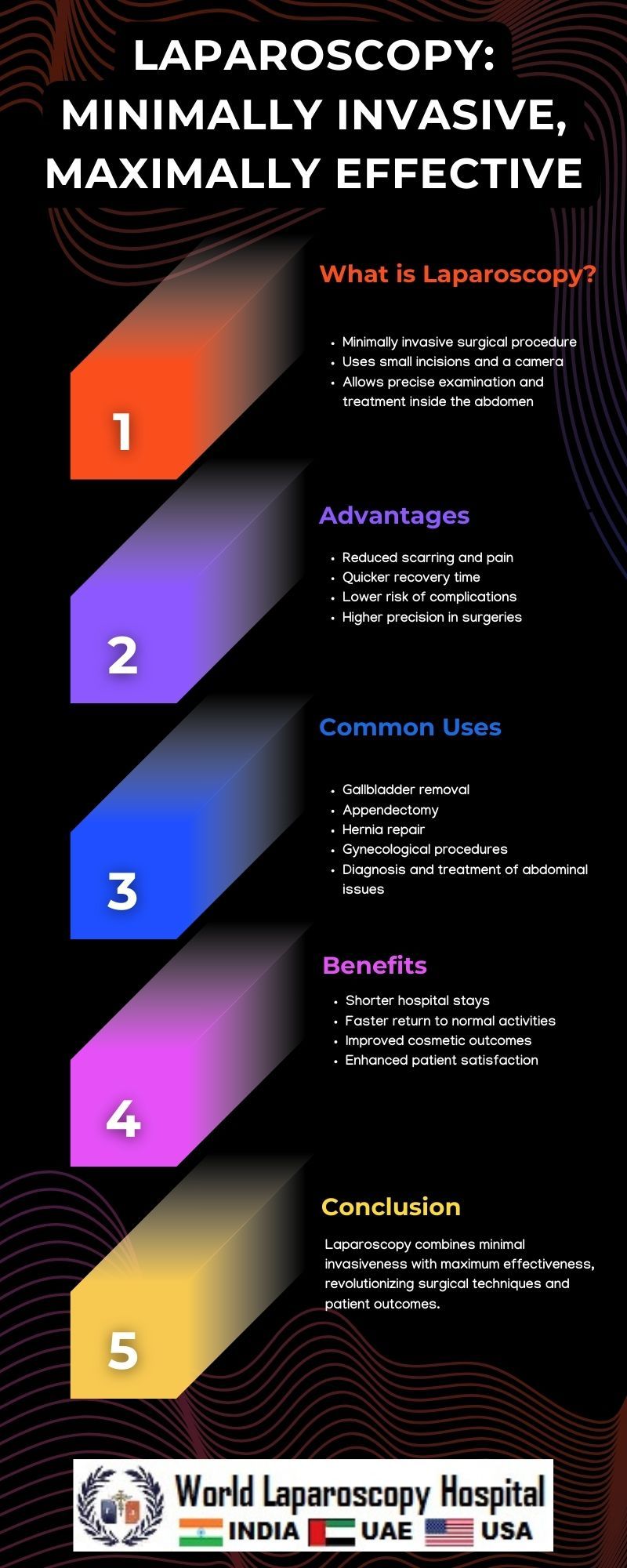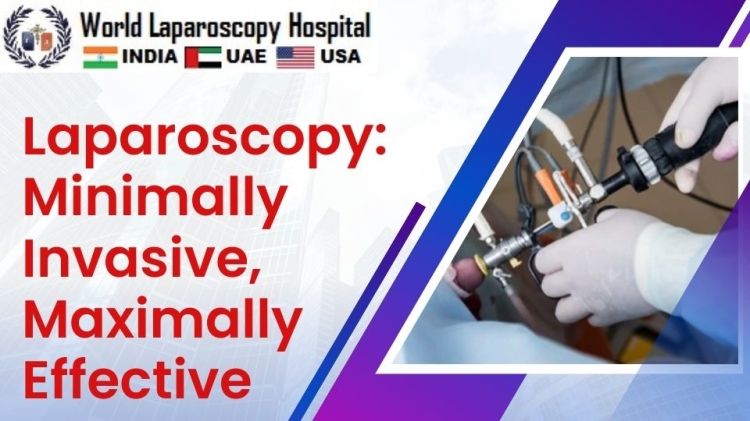Introduction:
In the ever-evolving landscape of medical advancements, laparoscopy stands out as a pioneering technique that has transformed the field of surgery. This minimally invasive procedure has redefined how surgeons approach various medical conditions, offering patients a host of benefits compared to traditional open surgery. In this comprehensive exploration, we delve into the intricacies of laparoscopy, its evolution, applications across medical specialties, and the profound impact it has had on patient outcomes.

Understanding Laparoscopy:
Laparoscopy, also known as keyhole surgery, involves the use of a slender, flexible tube equipped with a light and camera—commonly known as a laparoscope. This instrument is inserted through small incisions in the patient's body, allowing surgeons to visualize internal organs with remarkable precision on a monitor. Unlike traditional open surgery, which requires larger incisions, laparoscopy minimizes trauma to the body, resulting in reduced pain, quicker recovery times, and smaller scars.
Evolution of Laparoscopy:
The roots of laparoscopy can be traced back to the early 20th century when the first attempts at minimally invasive surgery were made. However, it wasn't until the latter half of the century that technological advancements, such as improved optics and video technology, paved the way for the widespread adoption of laparoscopy.
The 1980s marked a significant milestone with the development of the modern laparoscope, incorporating high-resolution cameras and fiber optics. This breakthrough allowed surgeons to navigate and visualize the abdominal cavity with unprecedented clarity, laying the foundation for the expansion of laparoscopy into various medical disciplines.
Applications Across Medical Specialties:
Gynecology:
Laparoscopy has revolutionized gynecological surgeries, offering a less invasive alternative for procedures such as hysterectomies, ovarian cyst removal, and tubal ligation. The precision of the laparoscope enables gynecologists to perform complex procedures with reduced blood loss, shorter hospital stays, and faster recovery times.
General Surgery:
In general surgery, laparoscopy has become the gold standard for procedures like appendectomies, cholecystectomies (gallbladder removal), and hernia repairs. The smaller incisions translate to less postoperative pain, decreased risk of infection, and improved cosmetic outcomes.
Urology:
Laparoscopy has found widespread use in urological procedures, including nephrectomies (kidney removal), prostatectomies, and treatment of urinary tract conditions. The precision afforded by the laparoscope is particularly valuable in preserving surrounding tissues and minimizing the impact on urinary function.
Orthopedics:
While traditionally associated with abdominal surgeries, laparoscopy has expanded into orthopedic procedures, with arthroscopic techniques gaining popularity. Joint surgeries, such as knee and shoulder arthroscopy, enable surgeons to diagnose and treat conditions with minimal disruption to surrounding tissues, resulting in faster rehabilitation for patients.
Gastroenterology:
Laparoscopy plays a crucial role in gastroenterology for procedures like fundoplication (anti-reflux surgery), colorectal surgeries, and liver resections. The ability to access and manipulate internal organs through small incisions enhances the surgeon's precision and reduces the risk of complications.
Patient Benefits:
The adoption of laparoscopy has brought about a paradigm shift in patient care, offering a multitude of advantages compared to traditional open surgery.
Reduced Pain:
Smaller incisions and decreased tissue trauma contribute to significantly reduced postoperative pain, enhancing the overall patient experience.
Quicker Recovery:
The minimally invasive nature of laparoscopy allows for faster recovery times and shorter hospital stays. Patients can return to their daily activities more swiftly, minimizing disruptions to their lives.
Smaller Scars:
The cosmetic aspect is not to be overlooked. The tiny incisions used in laparoscopy result in smaller, less conspicuous scars, improving the aesthetic outcome for patients.
Lower Infection Risk:
With reduced exposure of internal organs to external contaminants, laparoscopy inherently carries a lower risk of postoperative infections, promoting better overall recovery.
Enhanced Precision:
The high-definition imaging provided by laparoscopes enhances surgical precision, allowing for meticulous procedures with minimal damage to surrounding tissues.
Challenges and Considerations:
While laparoscopy has undoubtedly transformed surgical practices, it is essential to acknowledge the challenges and considerations associated with this technique.
Learning Curve:
The mastery of laparoscopic skills requires training and experience. Surgeons must navigate a learning curve to achieve proficiency in performing procedures with precision and efficiency.
Equipment Costs:
The initial investment in laparoscopic equipment can be substantial. However, over time, the long-term benefits in terms of patient outcomes and reduced hospitalization costs often outweigh the initial financial considerations.
Not Applicable to All Procedures:
While laparoscopy is versatile, there are certain complex or emergency procedures where open surgery may still be the preferred option. Surgeons must carefully assess each case to determine the most appropriate approach.
Future Directions and Innovations:
The evolution of laparoscopy continues, with ongoing research and innovations aimed at further enhancing its capabilities.
Robot-assisted Laparoscopy:
The integration of robotic technology into laparoscopic procedures has opened new possibilities for surgeons. Robot-assisted systems offer enhanced dexterity and precision, allowing for even more complex surgeries to be performed minimally invasively.
Single-Incision Laparoscopy:
Advancements in instrumentation have led to the development of single-incision laparoscopy, where all instruments are introduced through a single entry point. This further reduces the impact on the patient's body and improves the cosmetic outcome.
Augmented Reality and Artificial Intelligence:
The incorporation of augmented reality and artificial intelligence into laparoscopic procedures holds promise for real-time navigation, image analysis, and decision support, augmenting the surgeon's capabilities and improving outcomes.
Conclusion:
Laparoscopy has undeniably emerged as a cornerstone in modern surgical practices, offering a minimally invasive alternative that maximizes effectiveness across various medical specialties. From gynecology to orthopedics, the benefits of reduced pain, quicker recovery, and enhanced precision have transformed the patient experience and outcomes. As technology continues to advance, the future of laparoscopy holds exciting possibilities, promising even greater precision and expanded applications, further solidifying its place as a revolutionary force in the realm of surgery.
